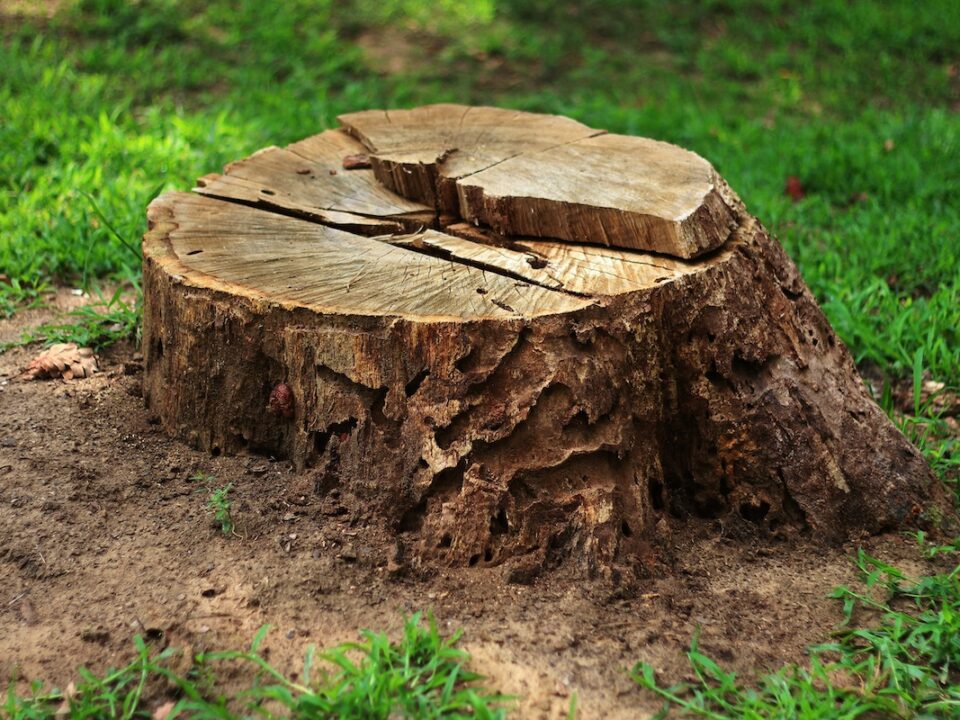
Tree stump in the forest
I. Introduction
Outdoor landscape can be an eyesore, disrupting the aesthetic appeal of an otherwise well-maintained garden. Fortunately, there are numerous creative ways to transform tree stumps into focal points or seamlessly integrate them into your landscaping design. From natural coverings to functional solutions and artistic embellishments, there’s no shortage of options for hiding tree stumps in style. By exploring innovative approaches, you can elevate your outdoor space while minimizing the visual impact of unsightly tree remnants.
**II. Natural Coverings**
**Planting Ground Cover**
Selecting low-growing plants to cover tree stumps not only hides the unsightly base but also adds texture and color to your landscape. Considerations such as shade tolerance and moisture levels are crucial when choosing ground cover species to ensure optimal growth and coverage. Popular options include creeping thyme, moss phlox, and ajuga, which thrive in a variety of conditions and require minimal maintenance.
**Incorporating Moss and Lichen**
Harnessing the natural camouflage of moss and lichen is a creative way to disguise tree stumps while enhancing ecological diversity in your garden. These organisms thrive in moist, shaded environments and gradually colonize the surface of the stump, creating a verdant tapestry of greenery. To encourage moss and lichen growth, provide consistent moisture and avoid disturbing the delicate ecosystem they inhabit. Besides their aesthetic appeal, moss and lichen offer ecological benefits by providing habitat for small insects and contributing to soil health.
**III. Functional Solutions**
**Transforming into a Planter**
Repurposing a tree stump as a planter is a practical and aesthetically pleasing solution that adds vertical interest to your garden. By hollowing out the center of the stump and filling it with soil, you can create a unique container garden for flowering plants, herbs, or succulents. Ensure proper drainage by drilling holes in the bottom of the stump and layering gravel or broken pottery shards before adding soil. Select plants suited to the growing conditions and scale of the stump to achieve a harmonious composition.
**Creating a Table or Seating Area**
Converting a tree stump into a functional table or seating area transforms an eyesore into a focal point of your outdoor space. By stabilizing the stump with braces or adding a flat tabletop surface, you can create a rustic yet charming centerpiece for outdoor gatherings. Consider surrounding the stump with complementary seating options such as benches or tree stump stools to encourage relaxation and socialization. Enhance the area with decorative elements such as string lights, cushions, or outdoor rugs to create an inviting ambiance.
**IV. Artistic Embellishments**
**Wood Carving and Sculpting**
Harnessing the natural beauty of wood, carving or sculpting the surface of a tree stump allows you to transform it into a stunning piece of outdoor art. Whether commissioning a professional artist or embarking on a DIY project, consider the natural contours and texture of the stump when planning your design. Intricate motifs, wildlife scenes, or abstract sculptures can imbue the stump with character and charm, turning it into a captivating focal point in your garden.
**Painting and Mosaic Work**
Adding a splash of color or intricate patterns to a tree stump surface can elevate its visual appeal and complement your outdoor decor. Choose weather-resistant paints or stains designed for outdoor use and apply multiple coats for durability. Alternatively, mosaic work using ceramic tiles or glass fragments allows for endless creative possibilities, from nature-inspired motifs to abstract designs. Seal the finished surface with a waterproof sealant to protect against the elements and ensure longevity.
**V. Eco-Friendly Disguises**
**Incorporating Hardscaping Features**
Using hardscaping materials such as rocks, pebbles, or mulch to cover the base of a tree stump seamlessly integrates it into your landscape design. Create a naturalistic border around the stump with rocks or pebbles, or mulch the surrounding area to suppress weeds and retain moisture. Designing pathways or garden borders around the stump further integrates it into the overall layout, creating a cohesive and visually appealing outdoor space.
**Constructing a Fairy Garden or Miniature Landscape**
Building a fairy garden or miniature landscape around a tree stump adds a whimsical touch to your outdoor environment while disguising the base. Incorporate miniature plants, figurines, and accessories such as tiny furniture or fairy houses to create a charming scene that sparks the imagination. Arrange the elements to mimic natural landscapes, such as woodland glens or meandering streams, and encourage interaction with the space by inviting visitors to explore and discover hidden treasures.
In conclusion, hiding a tree stump in your outdoor space offers an opportunity to unleash your creativity and enhance the beauty of your landscape. Whether you opt for natural coverings, functional solutions, artistic embellishments, or eco-friendly disguises, there are endless possibilities for transforming an unsightly stump into a captivating focal point or seamless integration into your garden design. By exploring innovative approaches and incorporating elements that resonate with your personal style, you can elevate your outdoor environment while minimizing the visual impact of tree remnants.


